This month we’ve had our eyes on dried plants and flowers. There’s nothing more elegant. And as the days start getting just a little bit colder, we’ll take whatever we can get that reminds us of summer days. We’ve LOVED the dried plant trend and decided to to try it out with paper because when do suddenly come across a dried frond? Dried plants are already permanent, we get it, but we loved them too much to not give it a shot. Here’s our DIY palm Leaves, jazzed up with a little bit of color, because could something really be Lars if it wasn’t at least one of the shades of the rainbow?
Materials:
DIY Palm Leaves
Palm leaves are an incredible material that has been used by humans for thousands of years. They come from various species of palm trees, and their uses range from traditional roofing material to modern-day fashion accessories. We’re going to explore the history, cultural significance, and sustainable benefits of palm leaves and then show you how to make DIY palm leaves since they can be hard to find.
History and Cultural Significance of palm leaves
Palm leaves have been used by humans for centuries, with some of the earliest known examples dating back to ancient Egyptian times. The leaves were used for making baskets, mats, and even paper. The ancient Greeks and Romans also used palm leaves for various purposes, including as a symbol of victory.
In many cultures, palm leaves hold spiritual and religious significance. For example, in Hinduism, the god Vishnu is often depicted holding a palm leaf fan, while in Christianity, palm leaves are associated with the story of Jesus’ entry into Jerusalem on Palm Sunday.
In some African cultures, palm leaves are used in traditional healing ceremonies, while in Mexico and other Latin American countries, palm leaves are used to create intricate decorations for the Day of the Dead festival.
Uses of Palm Leaves
One of the most common uses of palm leaves is for roofing material. In tropical regions where palm trees are abundant, palm leaves are used to create thatched roofs that can provide shelter from the sun and rain. The leaves are also used to create wall panels and flooring material.
Palm leaves are also used in the production of handicrafts and fashion accessories. In many parts of the world, palm leaves are woven into baskets, mats, hats, and bags. In recent years, palm leaf bags have become increasingly popular as a sustainable alternative to plastic bags.
The leaves can also be used to create beautiful decorative items such as fans, ornaments, and even furniture.
Sustainable Benefits of Palm Leaves
Palm leaves are a sustainable material that offers several benefits over other materials. Firstly, they are a renewable resource, as palm trees can produce new leaves every year. They are also biodegradable, meaning that they can be composted after use, reducing waste and pollution.
In addition, the production of palm leaf products is often a local and small-scale industry, providing income and employment opportunities for rural communities. By supporting the use of palm leaves, we can promote sustainable development and help to alleviate poverty in some of the world’s poorest regions.
DIY Paper Palm Leaf
Palm leaves are super popular to display and highly symbolic, but sometimes it’s hard to get access to them. We made this version out of paper and love how they turned out. And bonus? They are a BREEZE to make (see what we did there 😉
Materials:
- Brown butcher paper
- A pair of scissors
- Palm Leaf Template + Stem Template (on our shop)
- Glue gun
- Scotch tape
- Long Lollipop sticks
- Spray paint
- Acrylic paints
DIY palm leaves directions:
- Trace out your leaf template and cut it out. (We have formatted the the template to cut an 8.5×11 however, the leaves that we made were done with a much larger. To accomplish this you can use the template and size up by hand or send it to print at a larger scale.)
- Fan your leaf shape: start from the middle fold, choosing one side of your teardrop-shaped leaf to begin making even smaller folds, helping your leaf get that pretty fanned palm look. Repeat on the other side. (you can use a scoring tool to help you get sharper folds)
- Color your leaf: before connecting your leaf to the stem, you’ll want to paint it to make sure it gets an even color throughout. BEFORE PAINTING be sure your creases are defined! Then flatten out your shape again, just enough that you can get an even coat of paint on it. Paint and let dry for 1-2 hours! We used spray paint.
- While your leaf is drying, make the petiole stem!
- Use petiole stem paper cover template (once again this can be sized up on the computer or sized up based off the printed template)
- Fold your stem along the dotted lines on the template.
- You should be able to make a long pyramid-looking stem now with your paper! Hot glue the extra 4th fold to hold it all together (leave the extra 2-3 inches at the top unglued).
- Paint your petiole stem to match the leaf!
- After your leaf is dry, follow your original creases to re-fold your leaf into its fan shape
- Take a lollipop stick and place it inside of the most middle crease of your leaf, only a few inches from the bottom. Hot glue it in place.
- Cut diagonally from the leaf to the stick to take the excess off of where the leaf meets the stick (refer to photo).
- Tape the very bottom together to keep the shape of the leaf fanned and the stick secure
- Slide your petiole stem paper cover over the lollipop stick (the 2-3 inch extra end first), allowing those 2-3 inches at the top to cover the very bottom of the leaf and cover the area where your leaf is glued/taped to your stick. Hot glue the top in place.
 For Home Decor
For Home Decor
These palm leaves are great on their own for home decor in a vase. They’re also great as decor during Easter time like for Palm Sunday! Read about our post here.
Palm leaves are an incredibly versatile and sustainable material that has been used by humans for thousands of years. From traditional roofing material to modern-day fashion accessories, palm leaves offer a range of uses that are both practical and beautiful. It can be hard to find them so our DIY version is a beautiful ode to this beautiful leaf!
If you liked this post about palm leaves, you might also be interested in these posts:
We can’t wait to see these beautiful palm leaves in your home! Make sure to tag us with #larsmakes so we can see these beautifies in your home!



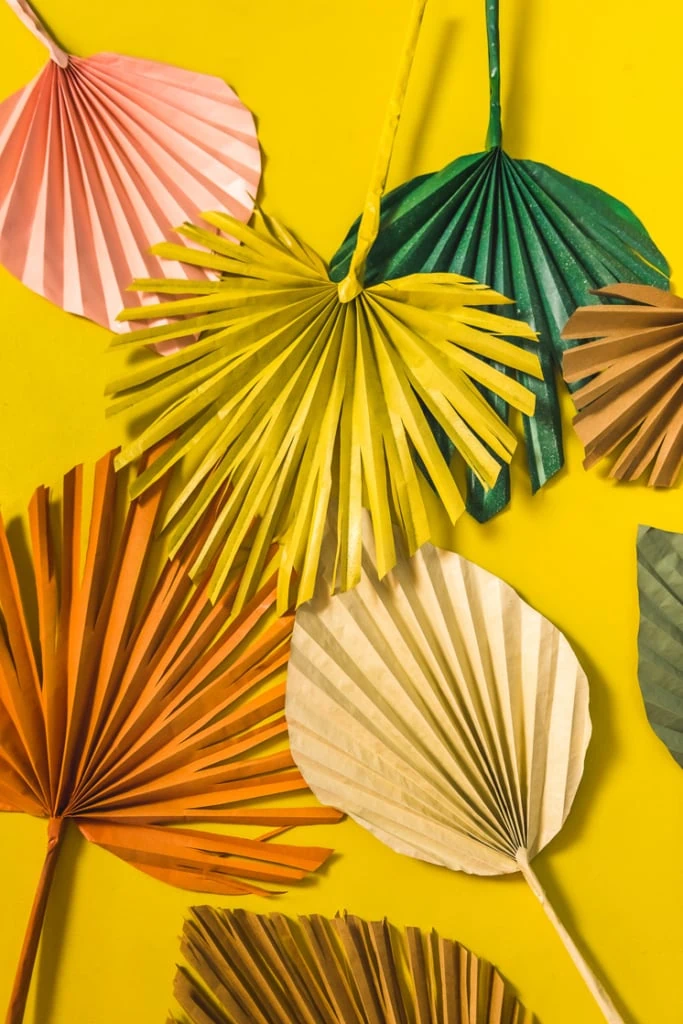
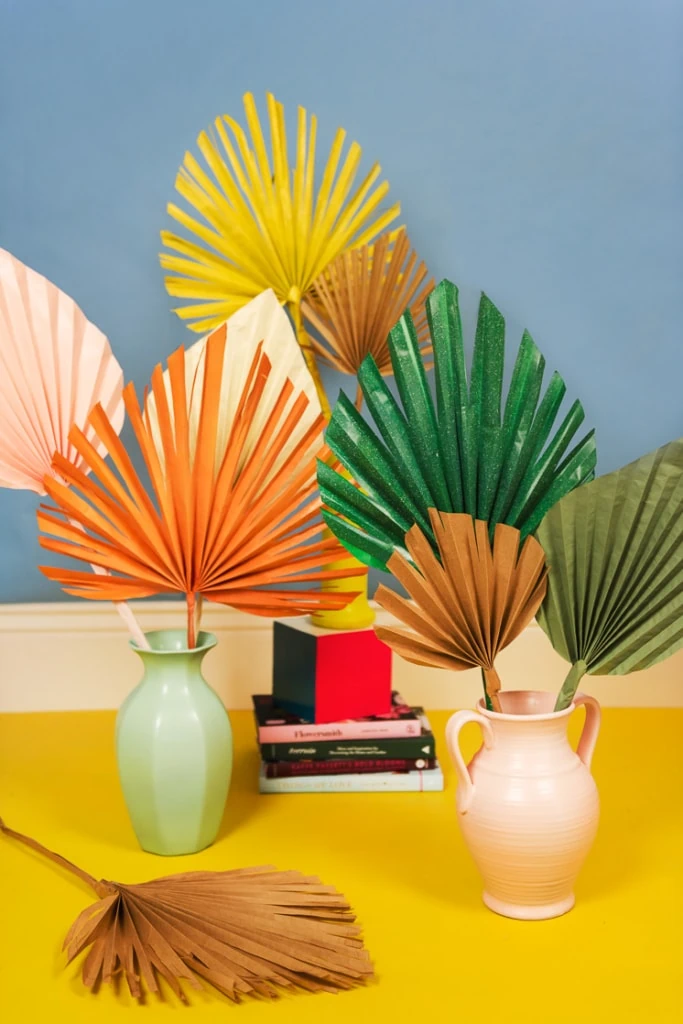
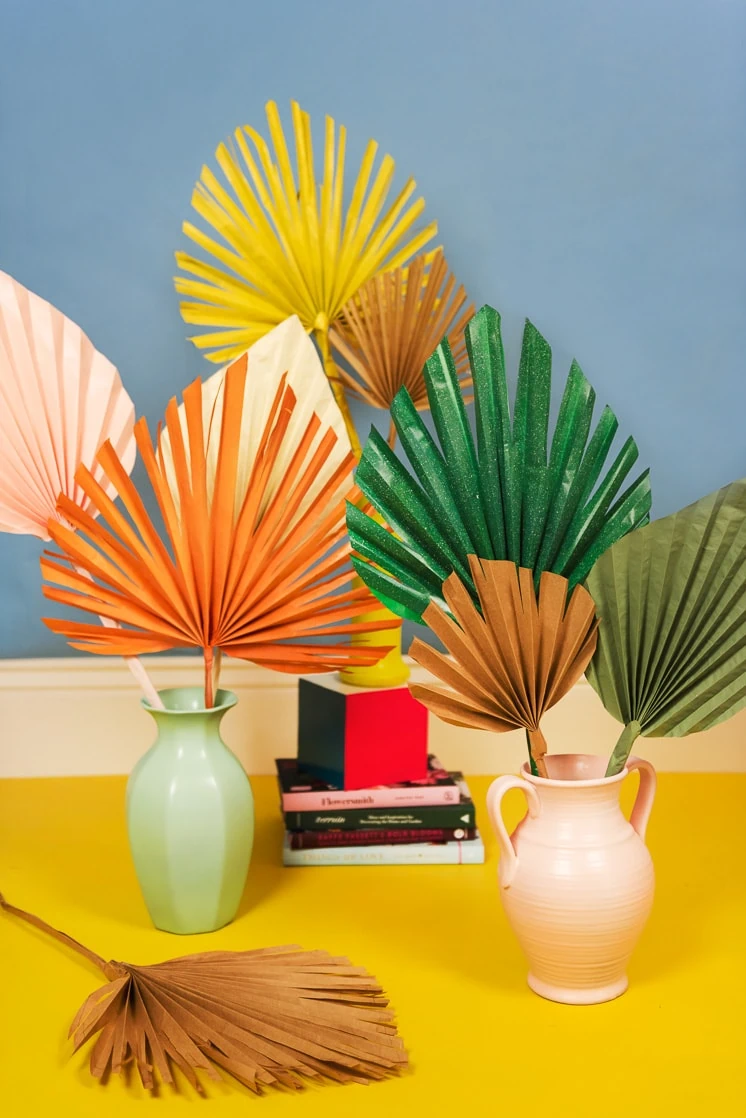
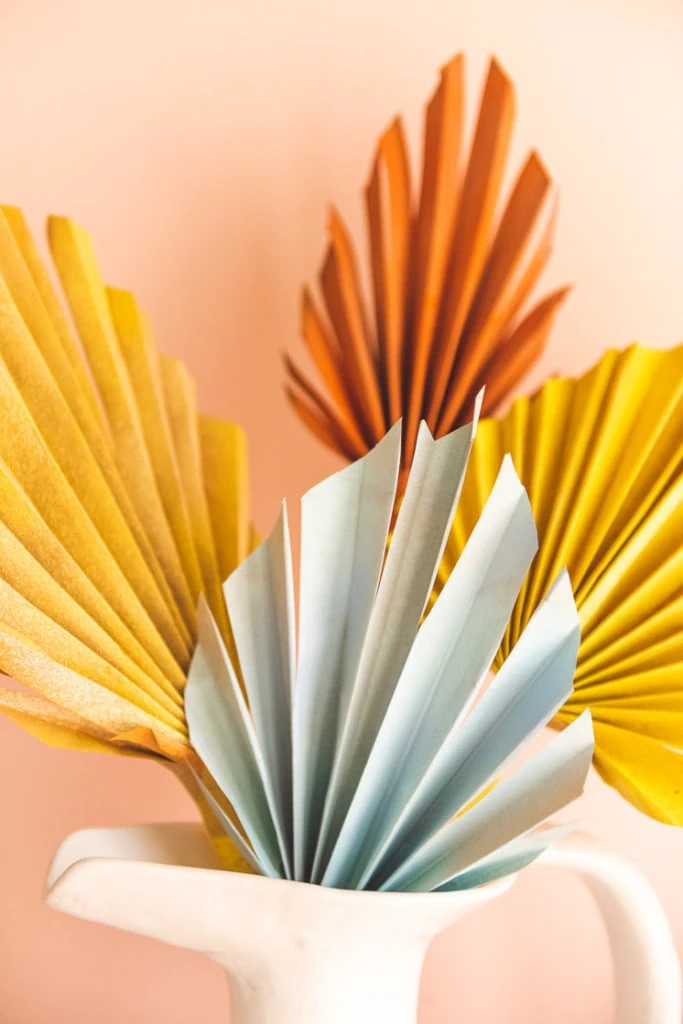
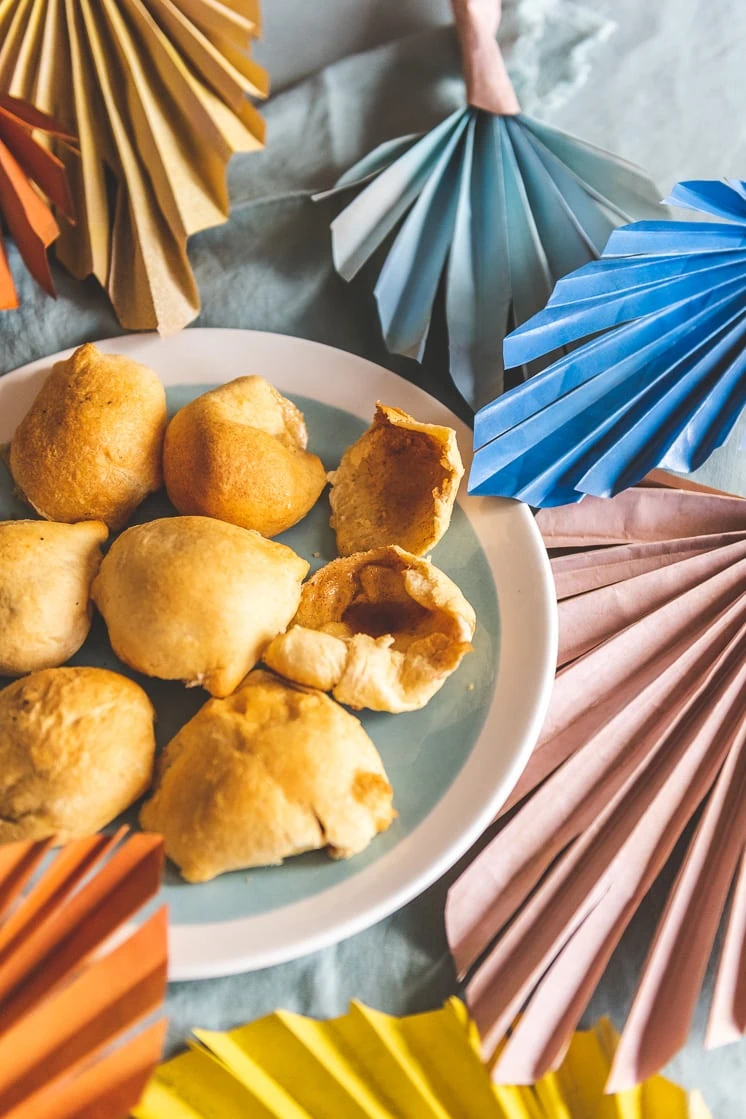
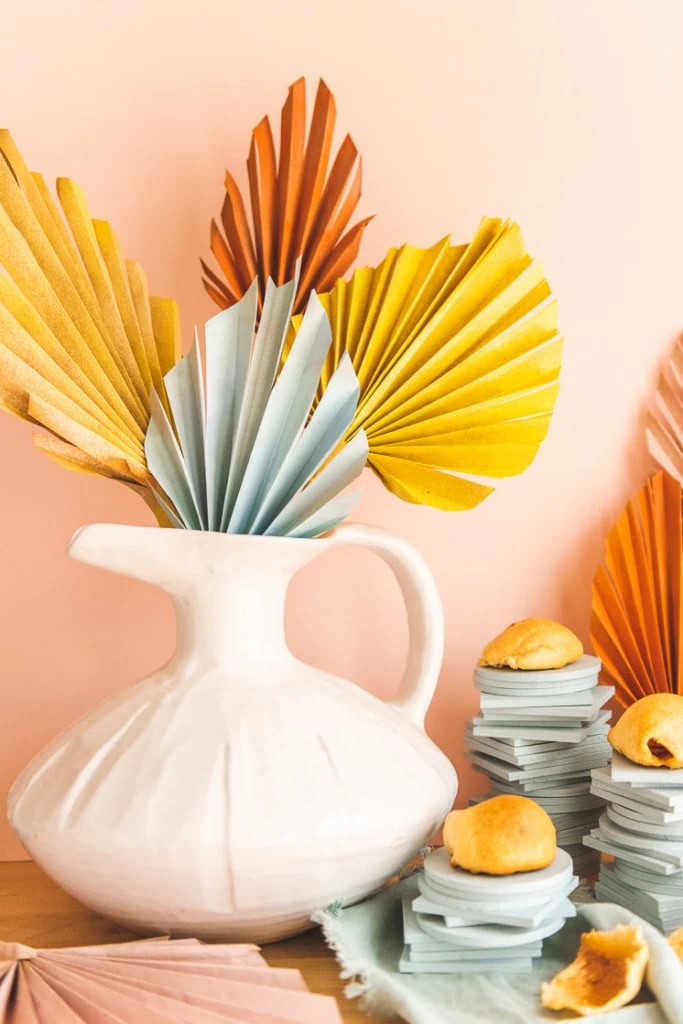
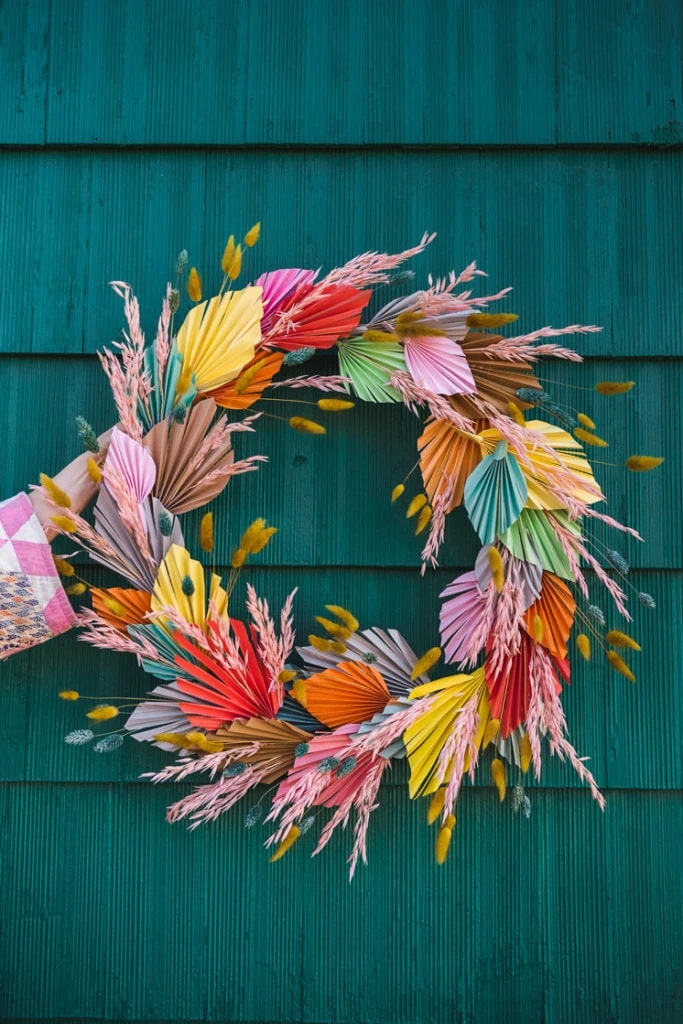
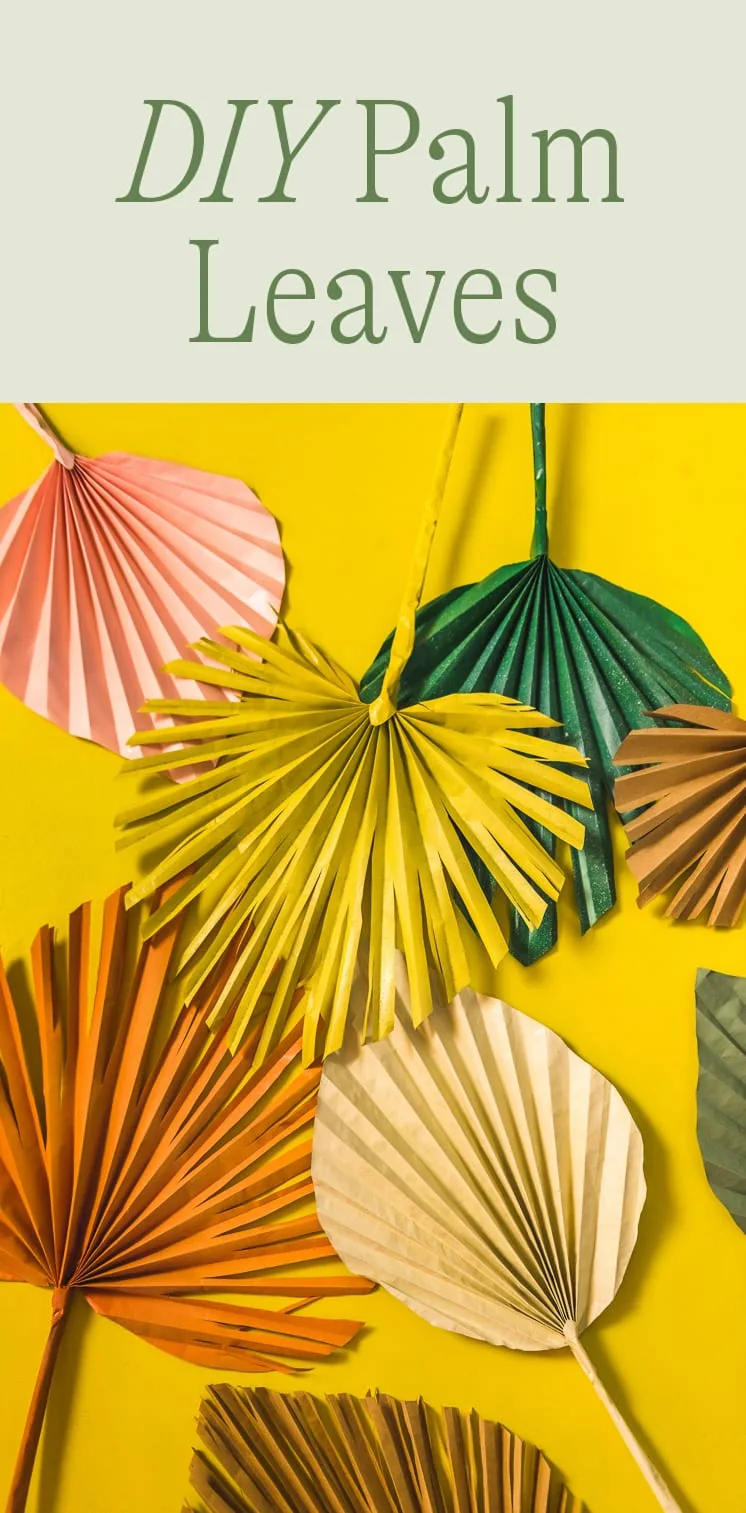

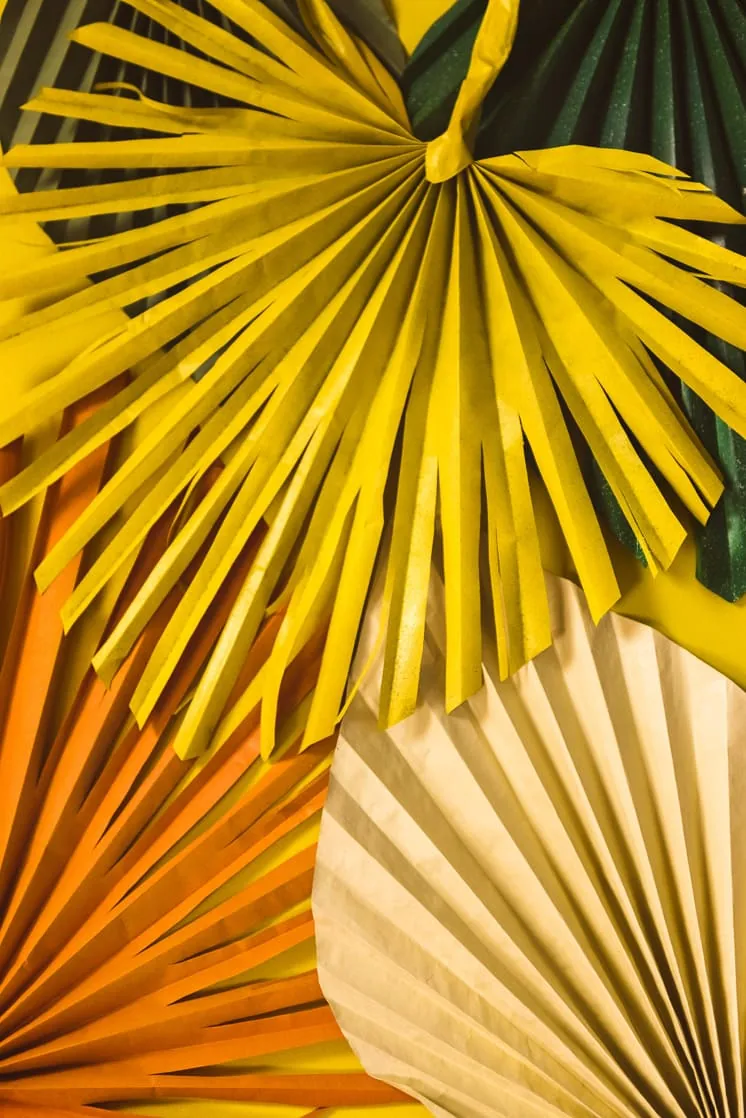
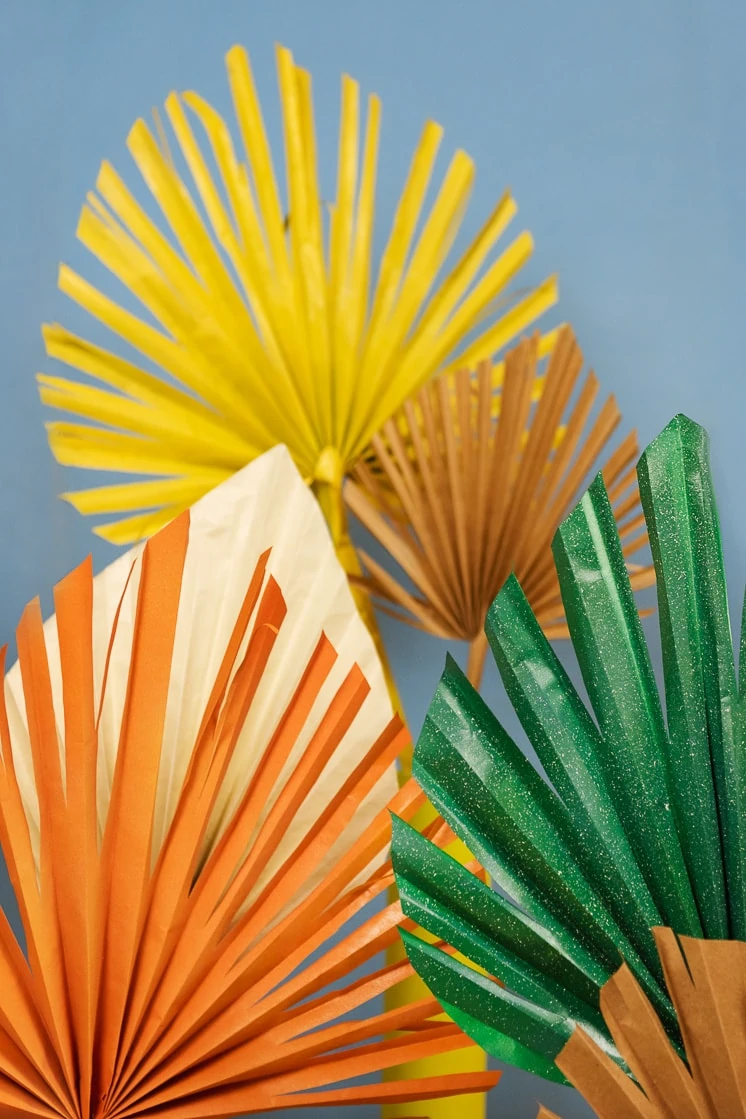
Comments